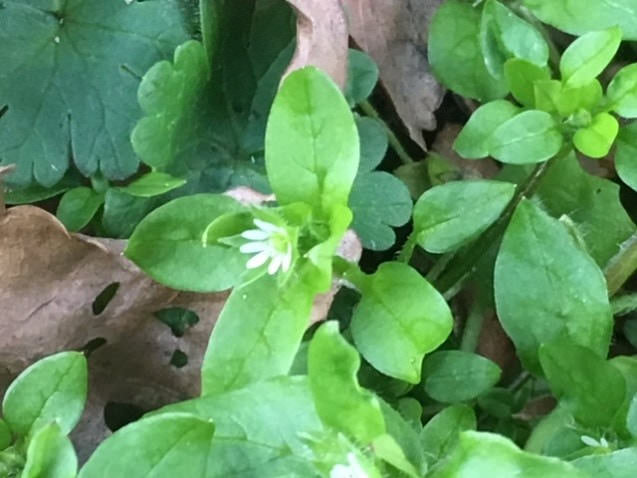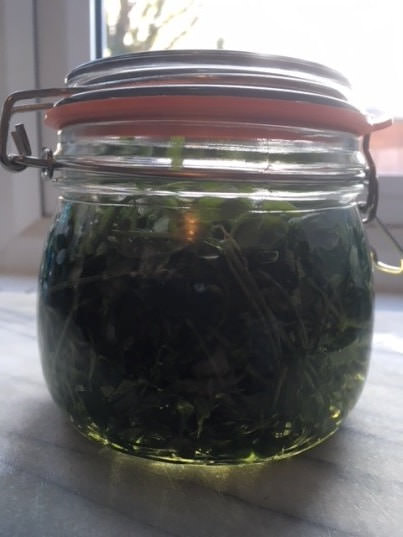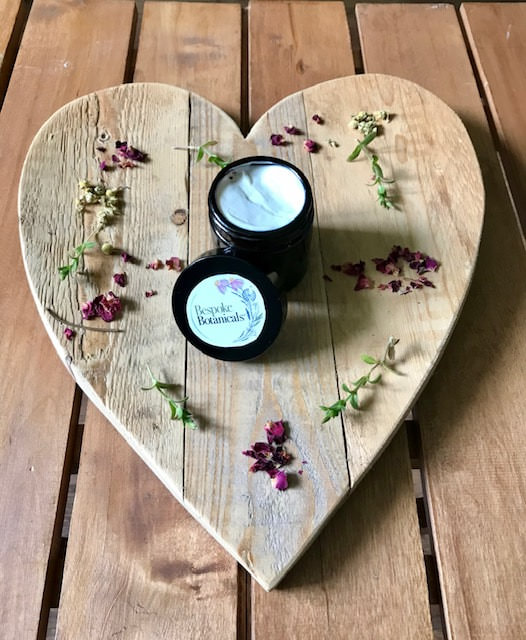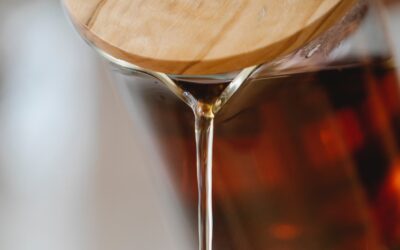


I have a confession to make- I sometimes introduce weeds to my garden.
I love foraging for things growing wild, but sometimes its just not convenient, or the place where I spot things is too near a busy road or likely to have been ‘watered’ by local dogs. I wanted to make some chickweed cream about this time last year, its great for calming itchy inflamed skin, and once the busy gardening and grass cutting season is in full swing my hands tend to be in need of some TLC. There was non growing wild in my garden but I am lucky to live near enough to the beautiful Sustrans cycle route which is treasure trove for foragers. I didn’t have to go far to find some, but I felt sure it would have been frequently urinated on as this was a prime dog walking location. I managed to find a small patch that was less dog accessible and picked a small amount for one pot of cream, plus a bit to spare, which I left in a patchy area of grass in my garden and forgot about. Yes you’ve guessed it – imagine my delight when this spring there is a decent patch of it growing through the grass near my herb bed. Perfect.
Chickweed (Stellaria media) has a long history of traditional use as an emollient for the skin, helping cases of eczema, psoriasis, ulcers, boils, abscesses as well as insect bites and stings. Internally it soothes the respiratory mucus membranes. Its also tasty in salads.
Firstly, as always with foraging you need to ensure that you have correctly identified the plant.
Common Chickweed has small oval/round leaves with a pointed end. The delicate leaves can be smooth or sometimes slightly hairy. It has small white flowers that look like they have 10 petals, but if you look closely you will see it has 5 petals that are lobed/split merely giving an appearance of 10 petals.
The stem of common chickweed is the best way to differentiate it from other similar plants, the stem is flimsy and mostly round with a tiny line of hairs down one side that look like it’s got a mohican!
You need to be careful that you aren’t confusing it with Scarlet pimpernel (Anagallis arvensis) which can look a lot like common chickweed with similar leaves. Scarlet pimpernel is poisonous and its sap can irritate the skin. Its flowers are often red or salmon in colour however, despite the name they can also be white. The main differences are in the stems which are round in chickweed and square in scarlet pimpernel and the flowers of scarlet pimpernel are made up of 5 petals which are not lobed or split.
Spurge (Euphorbia) can also be a similar looking plant that is toxic, however it lacks the fine line of hair along the stem and lobed petals
To make a chickweed cream, first you have to make an infused oil, in the same way we did in the Daisy Bruise Balm I shared earlier. To recap; collect a jars worth of chickweed, spread out on a large tray to allow any insects to escape, don’t wash the chickweed as excess moisture makes it more likely for mould to grow in the infused oil. Pack the chickweed in to the clean glass jar and completely cover with almond oil. Put a lid on the jar and leave on a sunny window ledge for 2 weeks. 2 weeks later strain the oil through a fine sieve and then you are ready to turn the infused oil into a cream.
A cream is an emulsion of either water in oil, or oil in water. When you make a herbal cream the medicinal actions can be added through either the water or oil components or, as I’ve done here, in both . Creams can be complicated to make and you need to get more specialized ingredients in many cases. However please don’t be put off by this, the satisfaction of creating your own bespoke cream far out weighs the effort.
Chickweed Cream (anti-itch, also good for eczema) (Makes 100g)
30ml/ 2tbsp chickweed infused sweet almond oil
15ml/ 1 tbsp jojoba oil (this is a richer oil which is great to help moisturise dry skin)
8g/ 2tsp beeswax (granules or grated. You can substitute with soya wax or ricebran wax to make a vegan cream)
10g / 2 ½ tsp cocoa butter
45ml/ 3 tbsp herbal infusion* (I like to use a chamomile or rose petal infusion in this cream)
5g/ 1 ¼ tsp emulsifying wax
10 drops Blue Chamomile Essential Oil
20 drops Aromantic’s “Preservative Eco”
(there is always some discussion about the use of ‘preservatives’ in natural skincare products, however, if you use any water in a product it is necessary to add preservatives to stop the growth of micro-organisms such as fungi and bacteria. Without a preservative this cream would have a shelf life of about 1 week, if stored in the fridge. Some people claim that you can use vitamins as natural preservatives, however vitamins act as anti-oxidants, that stop products from going rancid, but don’t affect and stop the growth of fungi and bacteria. Aromantics “Preservative Eco” is palm free and has good eco credentials and is licensed to be used in certified natural and organic products)
2 saucepans and dark glass jars
A cooking thermometer
*Pre-make the herbal infusion, Put 2 large tbsp of chamomile or rose petals in 150ml of boiling water and allow to steep for 10 mins. Strain the ‘tea’ through a sieve and its then ready to be measured up for the recipe
Heat the oils, beeswax and cocoa butter together in a bain marie or bowl over a saucepan of water until the ingredients have melted and reached 75 degrees centigrade
Warm the herbal infusion in another saucepan and dissolve the emulsifying wax into it.
Take the oily mixture off the heat.
Slowly add the herbal infusion to the oily mixture and stir until cool. You may find its better to use a balloon whisk to stir the mixture as it cools. It will slowly start to resemble an egg custard or mayonnaise
Once cooled but not fully ‘set’ add 10 drops of Blue Chamomile essential oil and the preservative.
Store in a dark jar.


Thank You for Sharing this informative Article! It is Very Useful To Everyone. Stay Healthy and keep Safe!